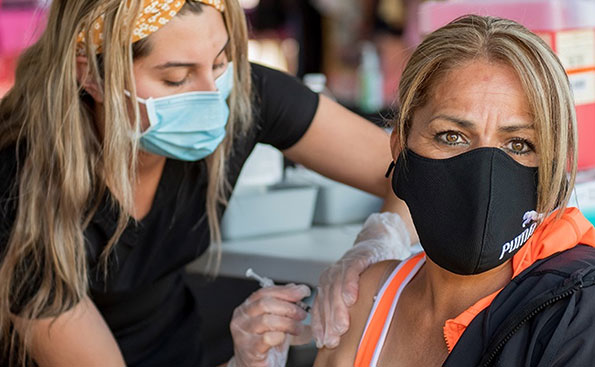
A study of fast-tracked government funds for relief during the COVID-19 pandemic uncovered bottlenecks at federal, university and community levels that undermined partnerships. Researchers, including UC Merced Professor Nancy Burke , made several recommendations to strengthen financial partnerships that underlie community-based participatory research.
In a paper published in Critical Public Health , the study, conducted across 11 California institutions, highlights bureaucratic legacies that can delay and complicate funding processes that support community-based research. Burke, a professor of public health and anthropology, and her co-authors identify the need to recognize the essential role fund managers play in community-engaged research and advocate an approach that promotes equity and genuine collaboration. This, they contend, would aid universities in meeting commitments to local communities.
“Everybody talks about how the pandemic revealed pre-existing fault lines and stratifications in society. We all know they were there, but the pandemic made them very, very clear,” Burke said.
Burke said there were instances in which community organizations, confident federal funds were imminent, hired people and made purchases for things like pop-up COVID vaccination centers or health-information outreach. Then the money stalled somewhere in the bureaucratic pipeline, placing the grassroots agencies in financial limbo. These pauses also caused tensions in community-academic partnerships.
The study, written by Burke and 12 co-authors, tracks the journey of some of the $12 million granted in September 2020 by the National Institutes of Health to support communities suffering from disparities in COVID treatment and relief. The NIH used an extraordinarily flexible process designed to distribute funds quickly to community fund managers.
A year later, the researchers surveyed people who represented universities, communities and other public health partners in distribution pipelines.

The theme that emerged was a system poorly designed to distribute funds to partners outside the university. Some delays were based on institutions’ need to comply with federal and state oversight, which takes time. The researchers recommend promoting a culture in which universities “demonstrate collaboration and foster trust by releasing equitable control to community partners and promoting flexibility in the face of changing research needs.”
It can be done, Burke said. She recalled the California Breast Cancer Research Program she was part of while at UC San Francisco in the early 2000s. The program used Community Research Collaboration grants in which the community partner and university-based researcher received separate budgets. The money wasn’t routed first through the university and then to the community, as were the NIH pandemic funds. Rather, the community partner organization managed its own portion of the study’s funds.
“Put yourself in the shoes of someone who is trying to both serve their community and keep 10 people funded in a local organization. If you can’t pay them due to delays in the distribution of promised research funds, they’re going to have to go and work for someone else and you have to rebuild,” Burke said.
“Small community-based organizations, like those in our region, do not have the reserves to wait for promised funding, especially when serving their community in the midst of a pandemic,” she said.
Among the recommendations made by the study:
Federal level
-
Engage community organizations in the design of funding opportunities.
-
Simplify and expedite the funding distribution process to reduce delays.
-
Adjust funding mechanisms to be more responsive to the immediate needs of community organizations.
University level
-
Train university fiscal managers and leaders on the principles of community-based participatory research and equity.
-
Develop and enforce policies that ensure equitable control and flexible fund allocation to community partners.
-
Create educational programs for university administrators to improve understanding and handling of community-engaged projects.
Community organization level
-
Build administrative capacities within community organizations to better manage and negotiate funding processes.
-
Encourage community organizations to participate in the planning and budgeting phases of projects.
-
Advocate for direct funding opportunities that bypass university intermediaries, allowing for greater control and quicker access to funds.
“We are in a region that doesn’t have enough physicians or health care providers. We need to build on our strengths. And community-based organizations are one of those strengths,” Burke said. “We need to continue to support our linguistically diverse population by keeping these organizations connected to clinics and hospitals and public health departments so that a network is in place any time there’s a need.”




 Public Information Officer
Public Information Officer

